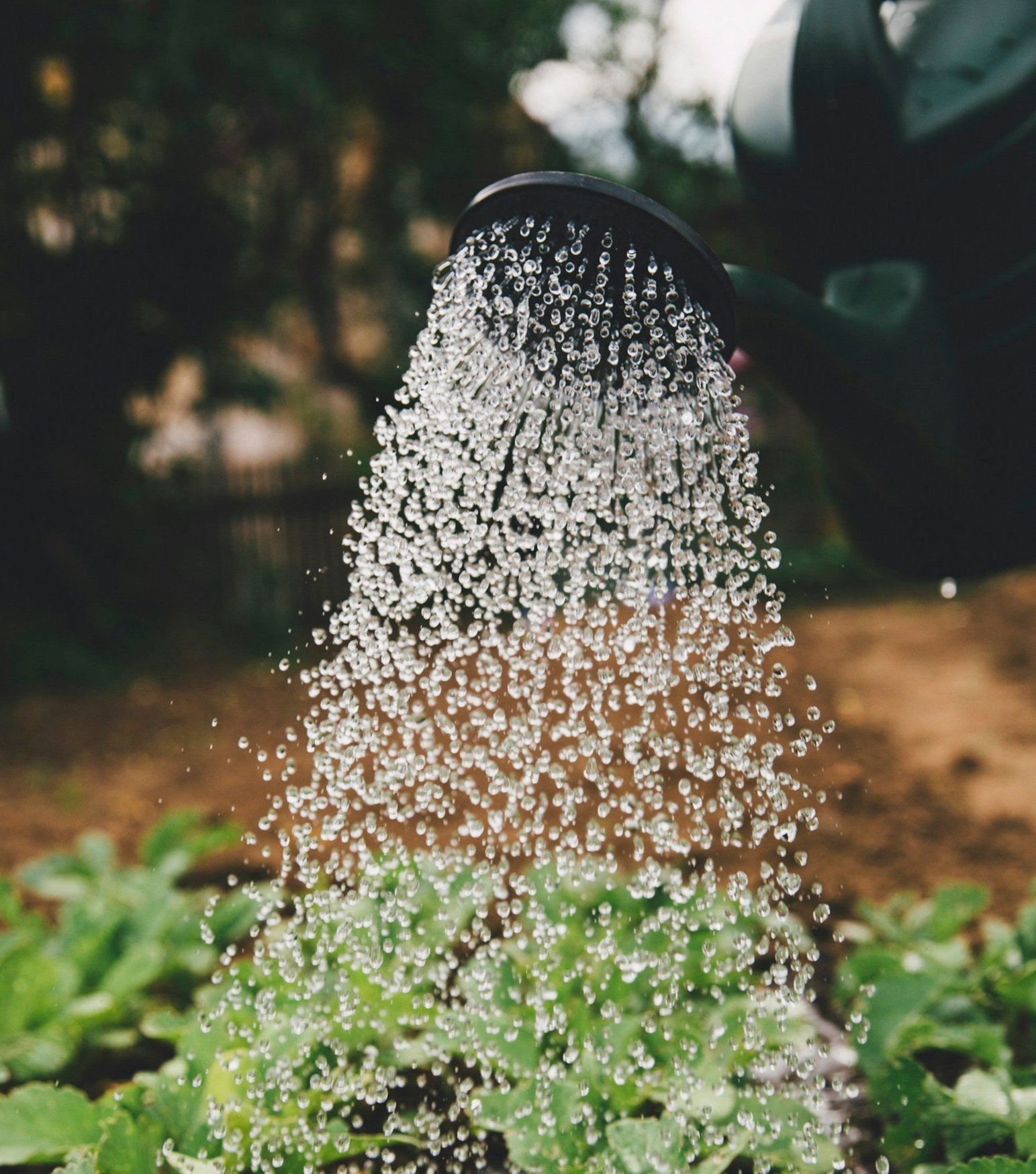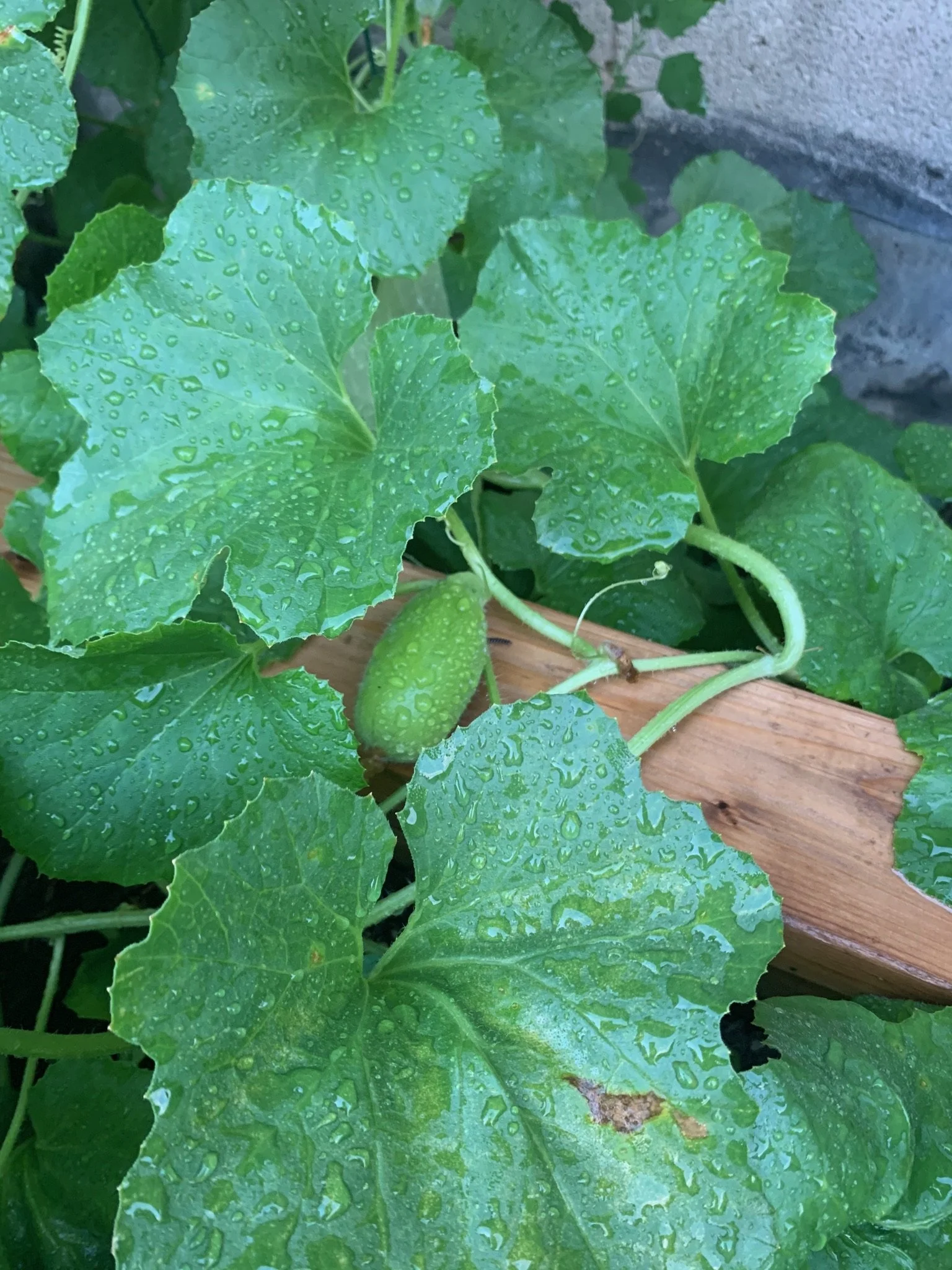Watering
For a lot of new gardeners watering their garden causes some anxiety, this is by far the most frequent asked question we get. When should I water? How much do I water? How do I know when I watered too much? We can see how this may cause some stress, after all watering is a crucial aspect of maintaining a healthy vegetable garden. Here are some detailed tips to ensure your plants get the right amount of water.
General Watering Tips
Consistency is Key
Consistent watering encourages roots to grow deeper into the soil, making plants more resilient to drought and less dependent on frequent surface watering. It helps maintain stable conditions, promoting vigorous and healthy growth. Inconsistent watering can lead to shallow roots, making plants more vulnerable to stress and less efficient at accessing nutrients Plants subjected to irregular watering can experience stress, leading to reduced growth, lower yields, and increased susceptibility to pests and diseases.
Watering Per Week
Vegetables generally need about 1-2 inches of water per week. This includes rainfall and irrigation. In hot or dry weather, you may need to water more frequently. Conversely, during cooler or rainy periods, you can reduce watering.
Watering Depth
Water should penetrate the soil to a depth of at least 6-8 inches. This encourages roots to grow deeper and access more nutrients.
Morning Watering
Watering in the early morning is ideal. It reduces evaporation and allows plants to absorb moisture before the heat of the day. It also helps leaves dry quickly, reducing the risk of fungal diseases. You should definitely avoid watering during the hottest part of the day which results in significant evaporation, preventing the water from effectively reaching plant roots.
Different Watering Techniques
Hand Watering:
Use a watering can or hose with a gentle spray nozzle to water the base of the plants. Avoid wetting the leaves to reduce the risk of disease.
Hand watering is great for small gardens or for giving extra attention to specific plants.
Drip Irrigation:
Drip irrigation systems deliver water directly to the roots through a network of tubes and emitters. This method is efficient and conserves water.
Drip irrigation reduces the chances of water runoff and minimizes wetting the foliage.
Sprinklers:
Sprinklers can cover large areas and are convenient for watering lawns and bigger garden beds.
While they can be effective, they may also wet the foliage, increasing the risk of disease. It's best to use sprinklers early in the morning.
Soaker Hoses:
Soaker hoses allow water to seep out slowly along their length, providing even and deep watering.
They are easy to install and can be laid out around plants or in rows.
Signs of Overwatering and Underwatering
Overwatering:
Symptoms: Yellowing leaves, root rot, mold growth, and wilting despite wet soil.
Prevention: Ensure good drainage, avoid watering too frequently, and let the soil dry out slightly between waterings.
Underwatering:
Symptoms: Wilting leaves, dry and cracked soil, stunted growth, and reduced yield.
Prevention: Check soil moisture regularly, water deeply, and mulch to retain soil moisture.
Soil Moisture Monitoring
Finger Test:
Insert your finger into the soil up to the second knuckle. If the soil feels dry, it's time to water. If it feels moist, you can wait a bit longer.
Soil Moisture Meter:
A soil moisture meter is a handy tool that provides a quick and accurate reading of soil moisture levels. It helps you decide when and how much to water.
And remember, always adjust your watering schedule based on soil moisture readings and weather conditions.
Transplanting
Proper watering during transplanting is crucial for success. For a detailed guide visit Watering: Tips for Transplant Success .




